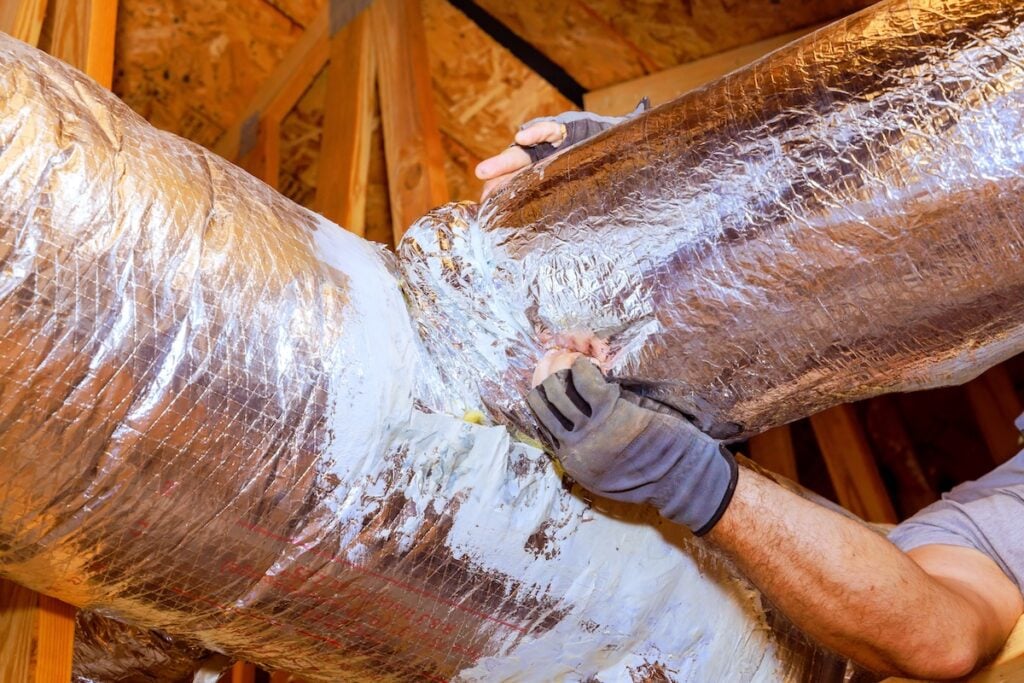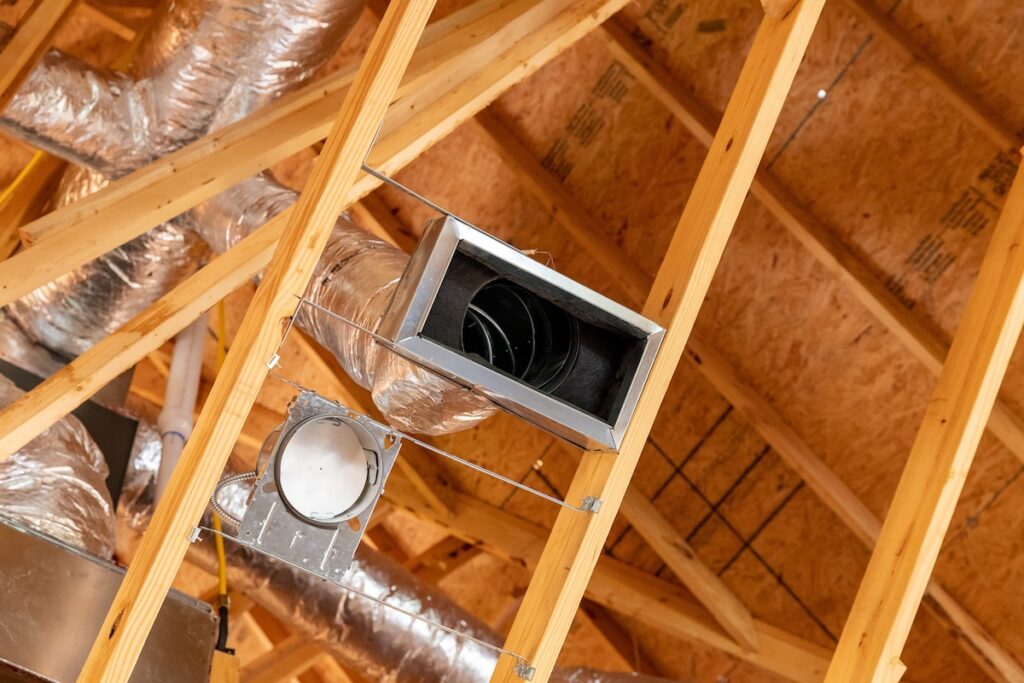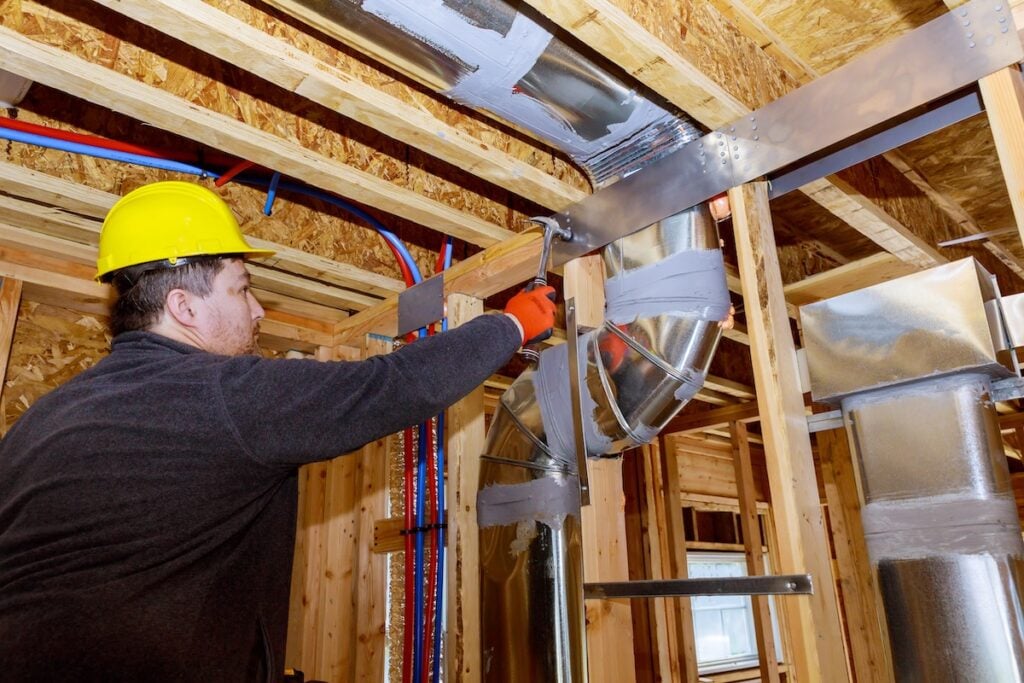The Utmost Ductwork Insulation & Energy Efficiency Guide
If your energy bills are climbing or your home never seems to stay at the right temperature, your duct system could be the culprit. Air ducts are the hidden highways of your HVAC system, carrying conditioned air to every room. But when they’re not insulated properly, a surprising amount of energy can be lost before the air ever reaches your vents. Investing in ductwork insulation is one of the most effective ways to improve comfort, reduce energy waste, and protect your HVAC system for the long haul.
When installed correctly, insulation keeps the air inside your ducts closer to the temperature your system intended. That means less strain on your heating and cooling equipment and more consistent comfort throughout your home. If you’re considering upgrading or rewrapping your duct system, you can explore more about professional ductwork services to understand your options.
In this guide, you’ll learn:
- Why duct insulation is vital for comfort and efficiency
- The key steps in insulating and maintaining ductwork
- Common materials used for duct insulation and how they compare
- How insulation impacts your energy bills and indoor air quality
- Signs it may be time to re-insulate or replace your duct system
Why Ductwork Insulation Matters

Ducts that run through unconditioned spaces—like attics, crawlspaces, or basements—are exposed to extreme temperatures. Without proper insulation, they can lose up to 30% of the heated or cooled air moving through them. That loss not only wastes energy but forces your HVAC system to work harder to keep your home comfortable.
Here’s why adding or upgrading insulation makes a measurable difference:
- Energy Savings: Proper insulation minimizes heat loss and gain, helping your HVAC system use less energy to reach the desired temperature.
- Consistent Comfort: Insulated ducts deliver air that’s the same temperature it left your furnace or air conditioner, avoiding uneven temperatures in different rooms.
- Longer System Life: When your system doesn’t have to overcompensate for temperature loss, it experiences less wear and tear over time.
- Improved Air Quality: Sealed and insulated ducts prevent contaminants from entering the system through leaks or condensation buildup.
- Lower Utility Bills: Reduced energy waste directly translates to cost savings throughout the year.
In homes around Fort Mill, SC and surrounding areas, where summers are hot and humid and winters can dip low, duct insulation is especially important to stabilize indoor comfort across all seasons.
5 Steps to Effective Ductwork Insulation
Proper duct insulation involves more than just wrapping materials around metal tubes. It’s a systematic process designed to seal leaks, insulate efficiently, and maintain system performance. Below are the key steps professionals follow to ensure your ducts work at their best.
1. Inspect and Seal Air Leaks
Before any insulation is added, ducts must be inspected for gaps or disconnections. Even small leaks can allow significant air loss and moisture infiltration. Technicians use mastic sealant or metal-backed tape to close joints, seams, and cracks.
Signs your ducts might be leaking include:
- Uneven temperatures between rooms
- Whistling sounds when the system runs
- Excess dust or debris around vents
Sealing leaks before insulating ensures you’re not trapping inefficiencies inside.
2. Choose the Right Insulation Material
Not all insulation types are suitable for ductwork. The best choice depends on your home’s layout, the duct material, and where the ducts are located.
Common types include:
- Fiberglass Wrap: Widely used for its affordability and heat resistance. Available with or without vapor barriers.
- Foil-Faced Insulation: Combines thermal resistance with a reflective surface to reduce radiant heat gain in attics.
- EcoFoil Insulation: A sustainable, aluminum-faced material that reflects heat effectively and offers excellent moisture control.
- Rigid Foam Board: Ideal for large or exposed ducts that require added durability and moisture resistance.
Professionals in Fort Mill, SC and surrounding areas often prefer EcoFoil and other reflective products that perform well in humid climates.
3. Proper Installation Technique
Once materials are selected, insulation must be installed tightly and evenly without compressing the material. Compressed insulation loses much of its R-value (the measure of thermal resistance).
Best practices include:
- Overlapping seams and securing with approved insulation tape.
- Covering elbows, transitions, and junctions thoroughly.
- Avoiding gaps around corners or joints.
The goal is to create a continuous, sealed layer that maintains consistent temperature protection throughout the duct system.
4. Insulate Ducts in Key Areas
Ducts located in unconditioned areas—like attics, garages, or crawlspaces—benefit most from insulation. Professionals focus on these zones to maximize efficiency gains.
Specific attention is given to:
- Supply ducts carrying cooled or heated air from the HVAC system.
- Return ducts bringing air back to the system for reconditioning.
- Ducts running close to exterior walls or ceilings that experience temperature swings.
5. Final Testing and Quality Check
After installation, technicians test the system for airflow balance and temperature consistency. They also verify that insulation materials haven’t obstructed dampers or access panels.
This step ensures your system not only saves energy but performs reliably through seasonal temperature changes.

Types of Duct Insulation: Comparing Options
Choosing the right material can feel overwhelming, but understanding the pros and cons of each helps you make an informed decision.
| Insulation Type | R-Value Range | Ideal Location | Pros | Cons |
| Fiberglass Wrap | R-4 to R-6 | Attics, basements | Affordable, widely available | Can retain moisture if not sealed properly |
| Foil-Faced Insulation | R-6 to R-8 | Hot climates or reflective needs | Reflects radiant heat, easy to clean | May tear if handled roughly |
| EcoFoil or Reflective Foil | R-6+ equivalent | Attics, crawlspaces | Moisture-resistant, eco-friendly, durable | Slightly higher cost |
| Rigid Foam Board | R-8+ | Exposed or large ducts | High R-value, resists damage | Bulkier and requires cutting |
Each option provides insulation and moisture protection, but the right choice depends on your home’s layout and your comfort goals.
Signs It’s Time to Re-Insulate or Rewrap Ductwork
Even the best insulation can degrade over time. Heat, humidity, and vibration from the HVAC system can cause materials to loosen or deteriorate. Recognizing early signs of wear helps prevent energy waste and costly repairs.
Aging or Damaged Insulation
If your duct insulation looks flattened, torn, or discolored, it may no longer be providing proper thermal resistance. This is common in attics where high heat and humidity accelerate wear.
Increased Energy Bills
A sudden rise in energy costs often indicates temperature loss through damaged ducts. Proper re-insulation restores efficiency and keeps conditioned air contained.
Uneven Heating or Cooling
If some rooms feel warmer or cooler than others, insulation gaps could be allowing air to lose heat or coolness before reaching certain areas.
Condensation or Moisture Buildup
Moisture around duct seams can cause mold and mildew growth. Insulation with vapor barriers—such as EcoFoil—helps prevent this issue.
Old or Outdated Materials
If your duct insulation hasn’t been updated in more than 15 years, it’s likely below modern energy efficiency standards. Newer materials offer better R-values and environmental performance.
How Ductwork Insulation Improves Overall Efficiency
When your duct system is insulated and sealed properly, the results extend far beyond just comfort.
Better Air Distribution
Insulation ensures that the air temperature inside your ducts remains stable from start to finish. This keeps every room in your home at a more consistent temperature and improves comfort overall.
Reduced Strain on HVAC Equipment
When less air is lost, your furnace or air conditioner doesn’t have to cycle as frequently. This not only saves energy but also extends the life of critical components.
Noise Reduction
Insulated ducts can absorb vibration and reduce the sound of air movement through vents, creating a quieter indoor environment.
Improved Indoor Air Quality
By sealing out condensation and dust, insulation prevents contaminants from entering your air supply, helping those with allergies or respiratory concerns breathe easier.
Enhanced Property Value
Energy-efficient upgrades like duct insulation are attractive to buyers and can boost your home’s market value.
Energy Savings and ROI of Insulated Ductwork
Many homeowners underestimate how much money duct insulation can save. The U.S. Department of Energy estimates that sealing and insulating ducts can improve HVAC efficiency by 20% or more.
For a typical household in Fort Mill, SC and surrounding areas, that could mean hundreds of dollars in annual energy savings. While the cost of professional duct insulation varies based on system size and accessibility, most projects pay for themselves through reduced energy consumption within a few years.
| Home Size | Estimated Annual Savings | Payback Period |
| 1,500 sq. ft. | $150–$250 | 2–3 years |
| 2,000 sq. ft. | $250–$400 | 2–4 years |
| 2,500+ sq. ft. | $400+ | 3–5 years |
Beyond savings, well-insulated ducts create a more stable and comfortable living environment, particularly in humid Southern climates.
Partnering with Professionals for Lasting Results

While some insulation materials can be purchased at hardware stores, professional installation ensures optimal results. Technicians have the right tools and expertise to handle duct sealing, material selection, and placement without restricting airflow or damaging the system.
Professionals also:
- Verify insulation meets local code requirements.
- Use materials rated for high heat or humidity zones.
- Offer warranties and maintenance plans for long-term protection.
In Fort Mill, SC and surrounding areas, hiring experienced HVAC specialists helps ensure your system operates efficiently and safely throughout the year.
Rewrap, Reinforce, and Relax
Properly insulated ducts are a cornerstone of an efficient home. They keep energy costs low, air quality high, and comfort consistent in every season. Whether your ducts are old, exposed, or underperforming, professional re-insulation can make a significant difference in both comfort and cost savings.
Panther HVAC proudly serves Fort Mill, SC and surrounding areas, helping homeowners boost efficiency and comfort through expert ductwork rewrapping and insulation services. If you’re ready to reduce energy waste and improve indoor comfort, contact us today to schedule your inspection or duct insulation consultation.
